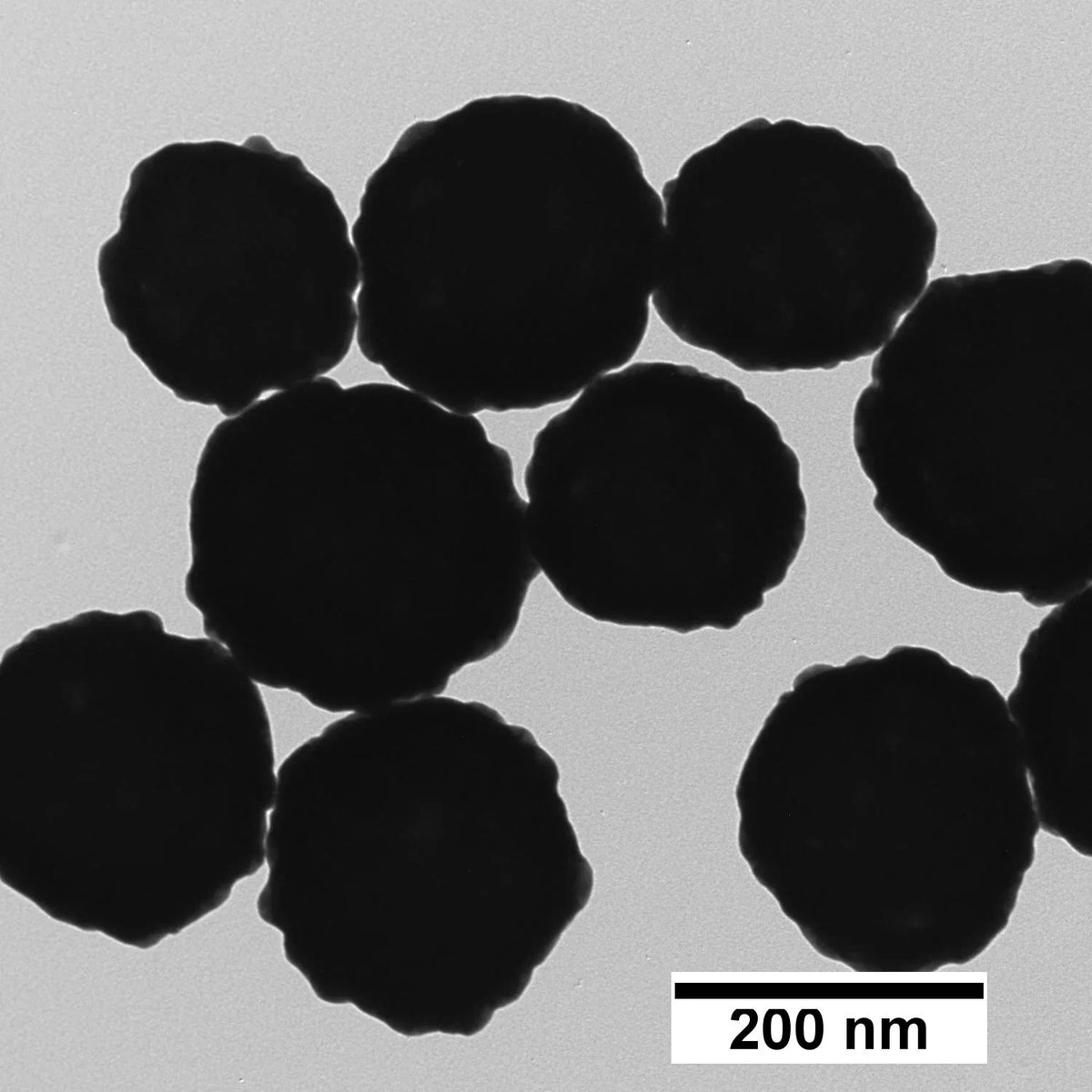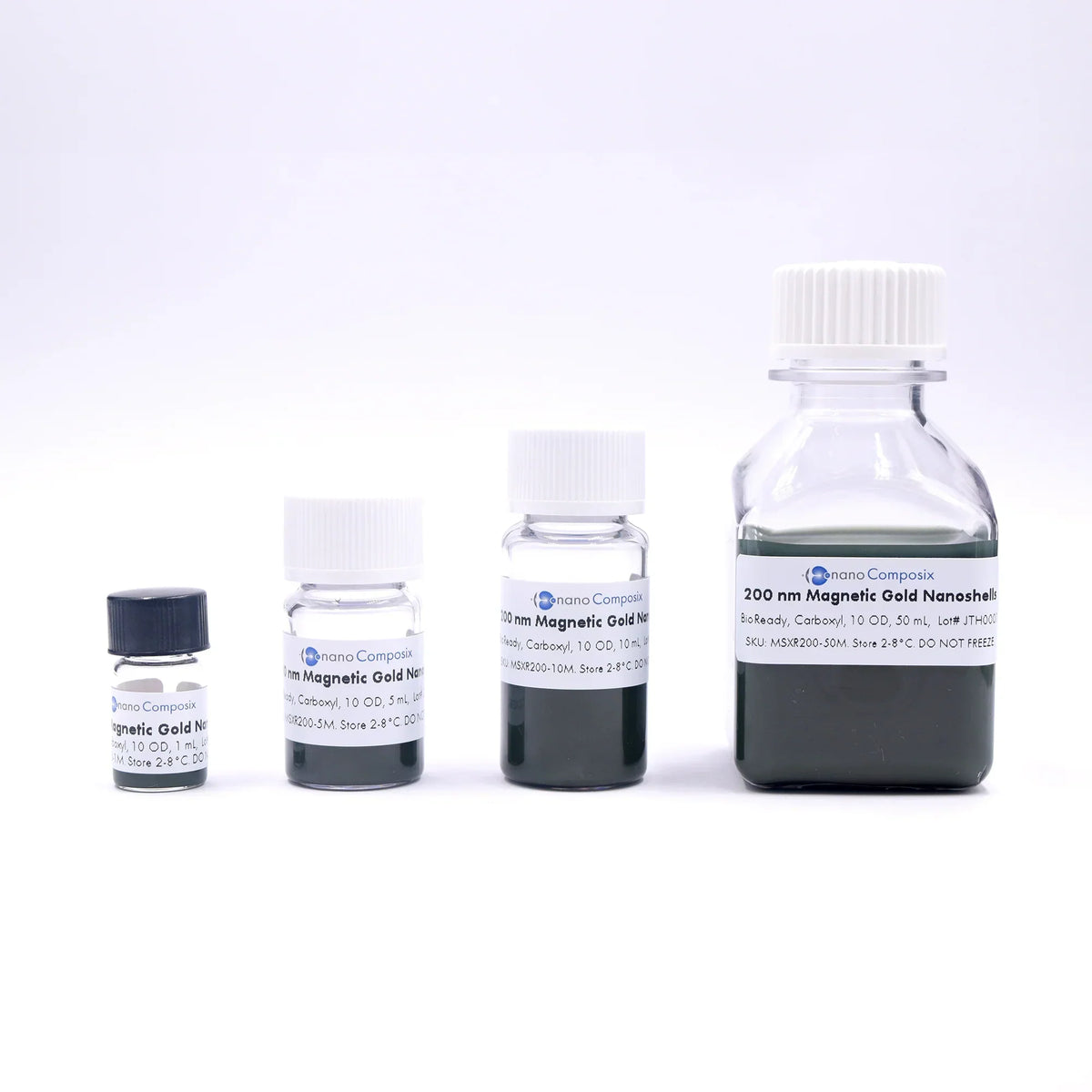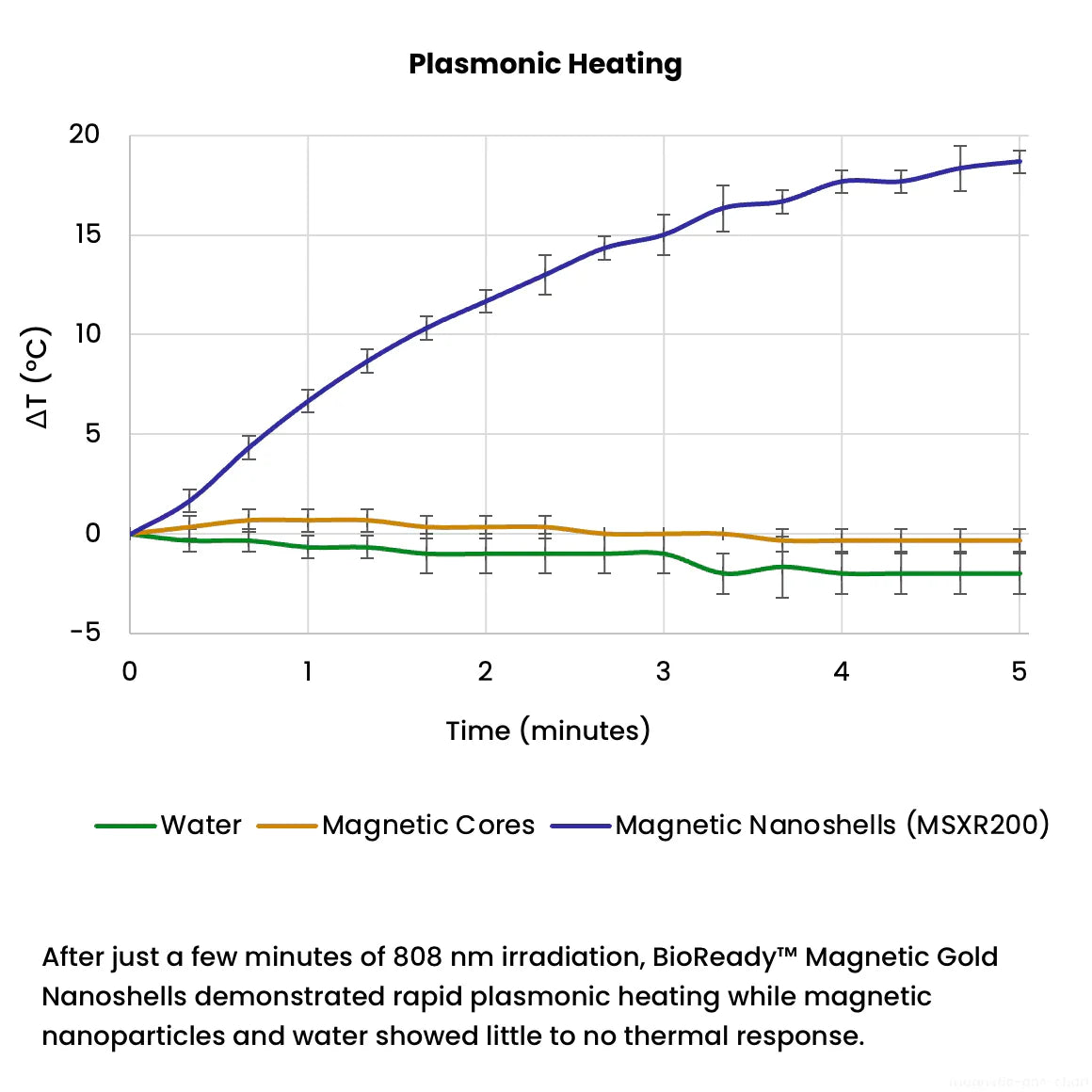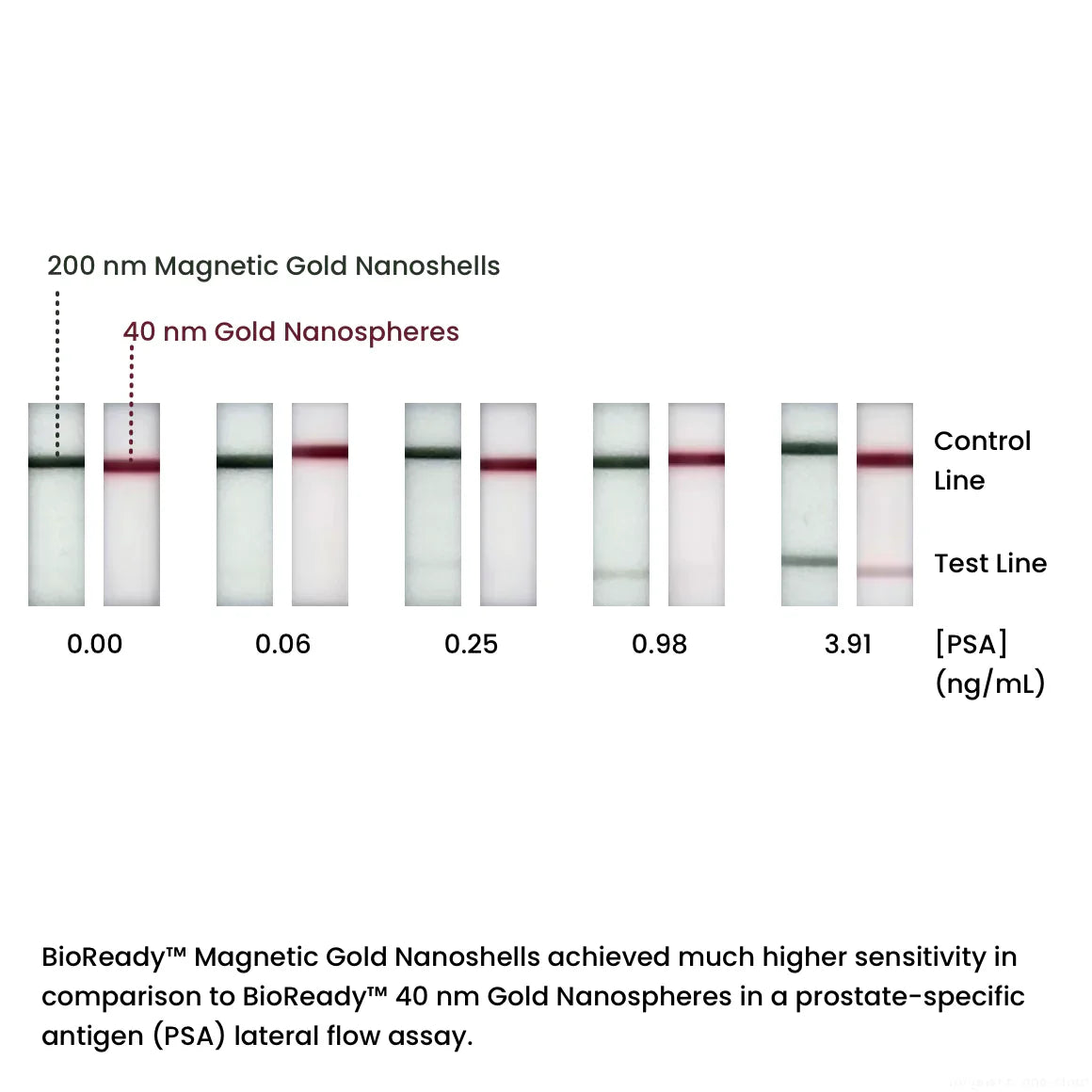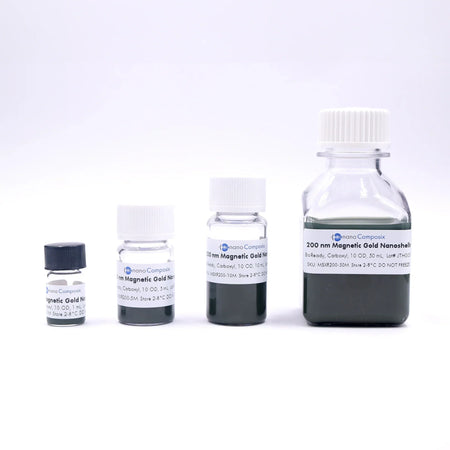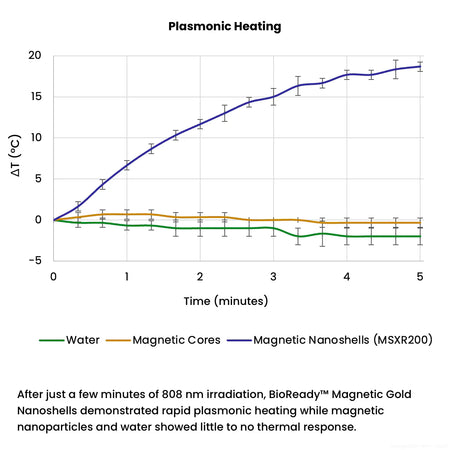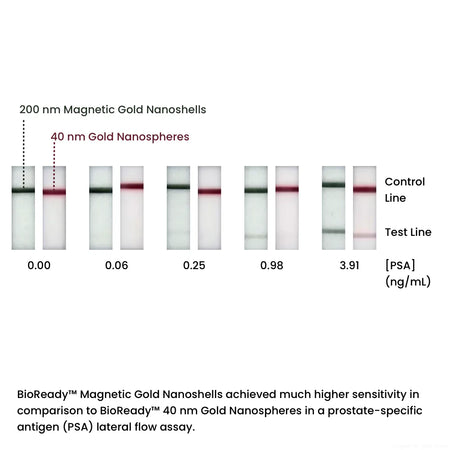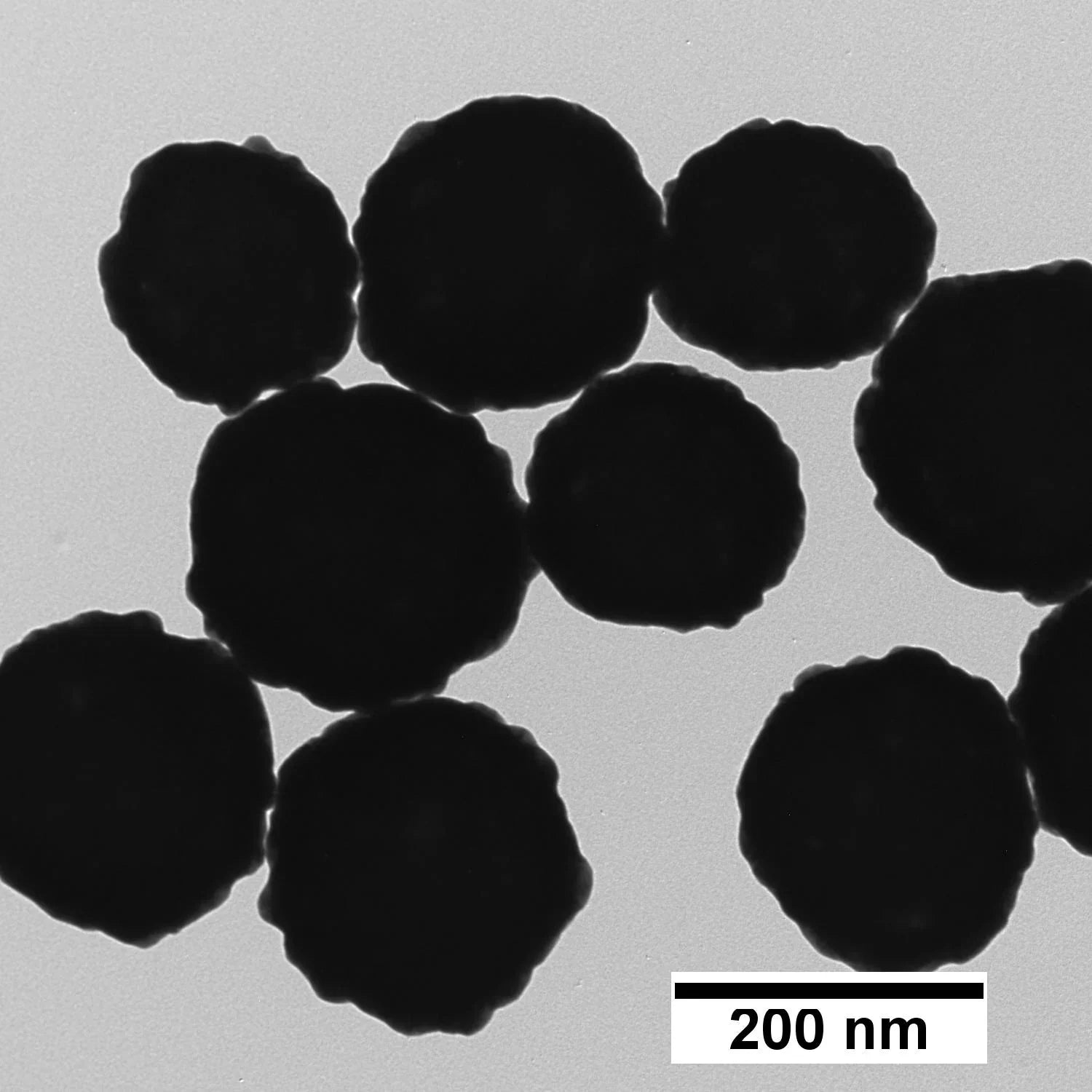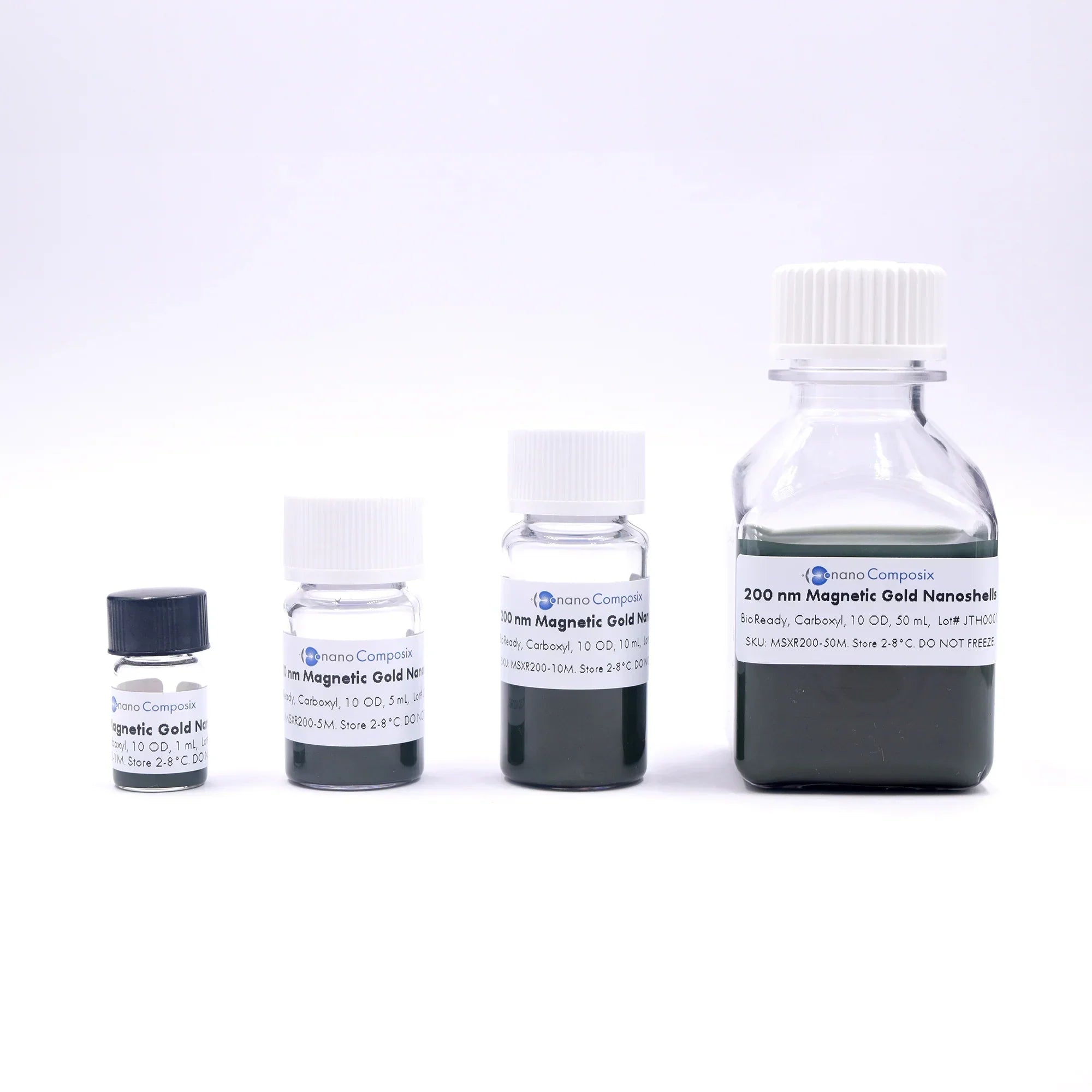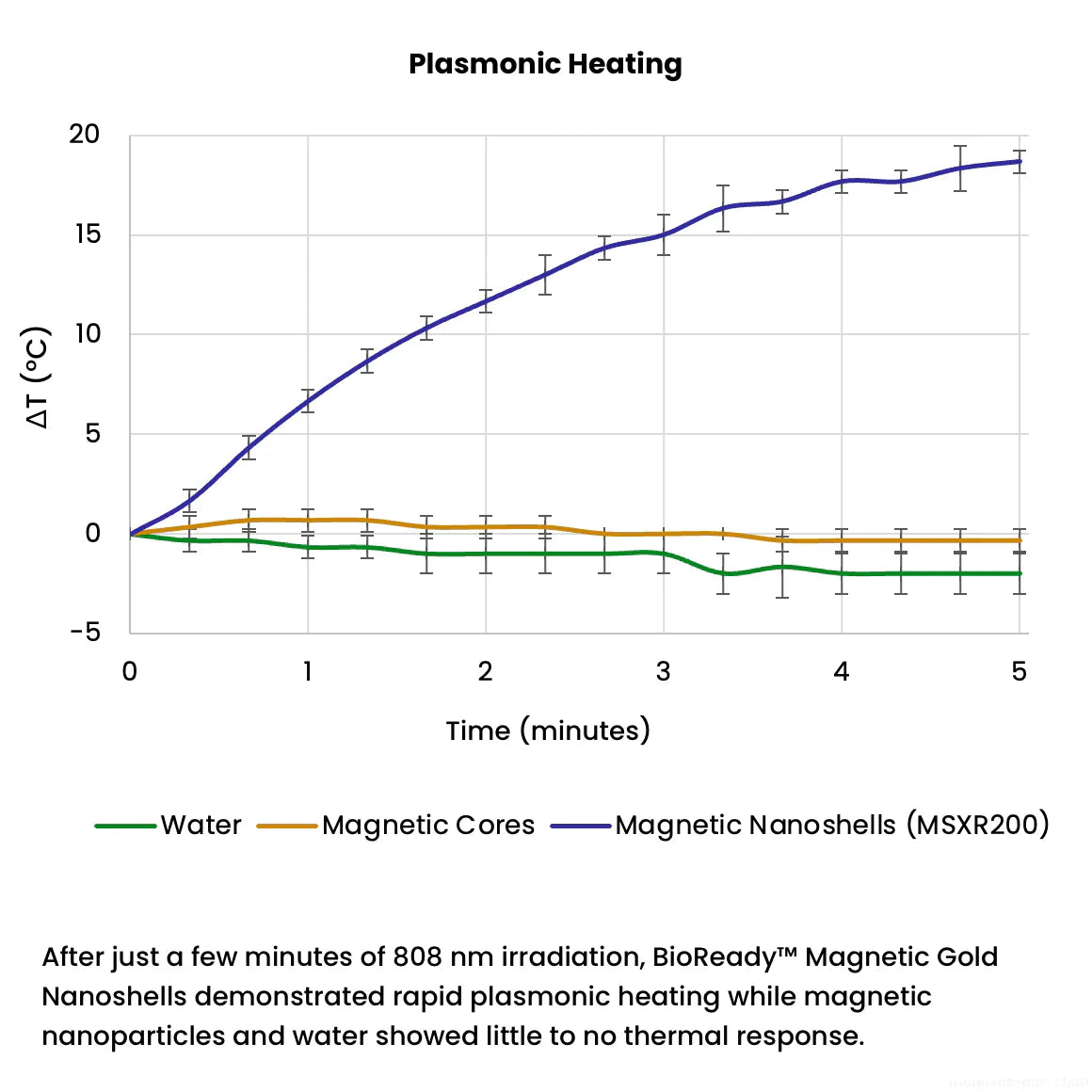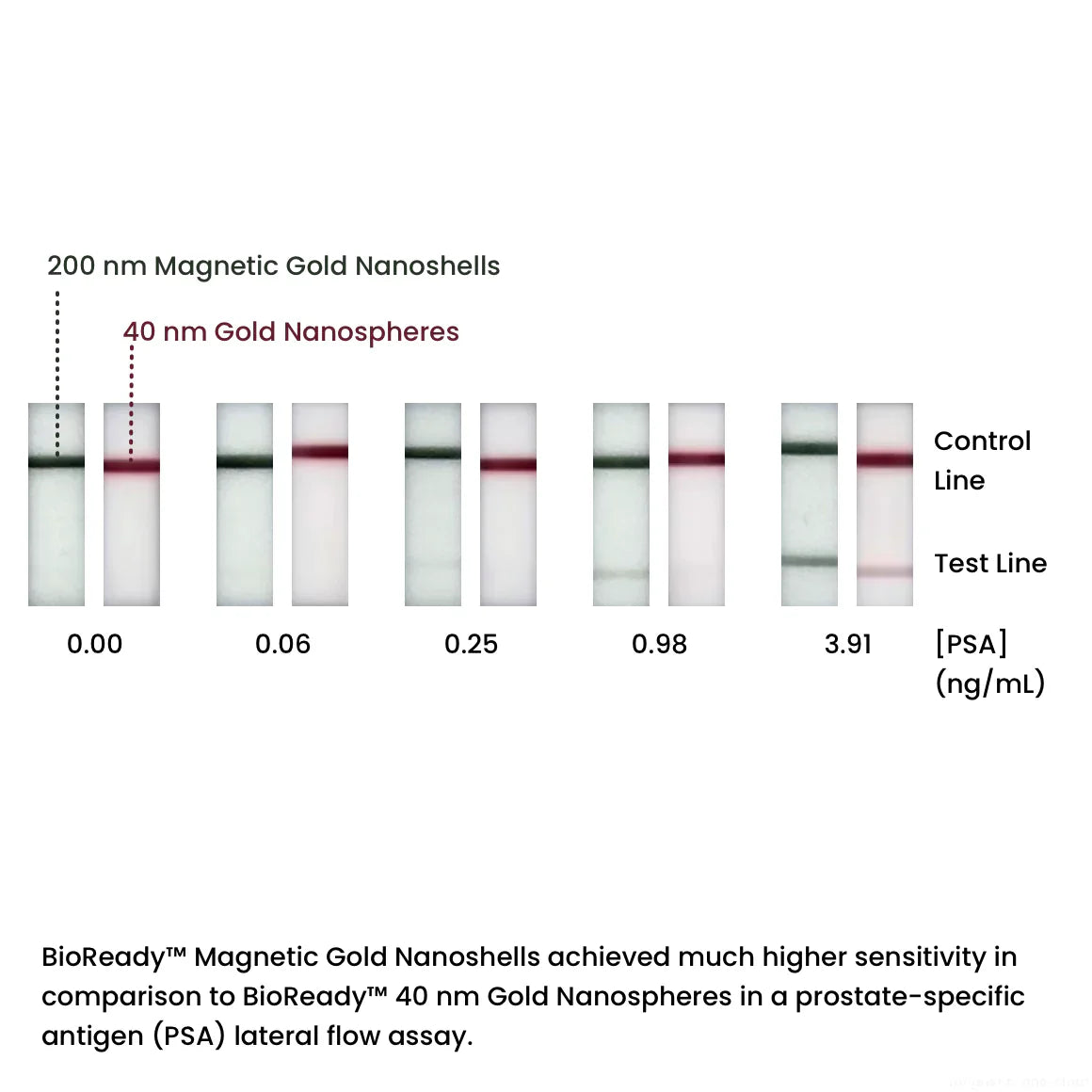200 nm Magnetic Gold Nanoshells
Customers outside of the US & Canada: please visit your local distributor’s website to purchase this item using its SKU, or contact us here. Thank you!
200 nm magnetic gold nanoshells have a superparamagnetic core that enables easy manipulation such as separation or concentration. Combined with the plasmonic optical properties of the gold shell, these nanoparticles are useful in a variety of therapeutic and diagnostic applications such as biosensors, lateral flow assays, SERS, drug delivery, and photothermal therapy.
BioReady Magnetic Gold Nanoshells offer a carboxyl ligand (lipoic acid) that is covalently bound to the metal surface enabling subsequent covalent conjugation. Antibodies and other amine-containing biomolecules efficiently bind to carboxyl gold nanoshells using EDC-NHS chemistry to make highly stable conjugates. Review our conjugation protocol or contact our experts for support.
nanoComposix provides high quality nanomaterials that are precisely engineered and highly characterized. All our products are supplied with a batch-specific Certificate of Analysis including characterization data such as TEM, DLS, Zeta, and UV-Vis.
Intended for Research Use Only. Not for use in diagnostic procedures. Contact us for custom formulations, ISO 13485/cGMP compliant materials, or click below for bulk supply requirements.
| Overview | |
|---|---|
| Surface | Carboxyl |
| Description | Covalently bound. Conjugatable surface. |
| Solvent | 0.02 mM potassium carbonate |
| Surface chemistry | Lipoic acid |
| Specifications | |
| TEM Diameter | 205 ± 20 nm |
| CV | ≤ 15% |
| Documents | |
| Example Certificate of Analysis (CoA) | Download |
| Safety Data Sheet (SDS) | 10 OD (BioReady) |
| Storage & Handling | Download |
| Protocols | Antibody Purification BioReady 200 nm Carboxyl Magnetic Gold Nanoshell Covalent Conjugation Tutorial video: Covalent Coupling of Antibodies to Carboxyl Gold Nanoparticles ↗ |
| Expected Ranges | |
| Zeta potential | ≤ –40 mV |
| Peak wavelength (λmax) | 780–890 nm |

